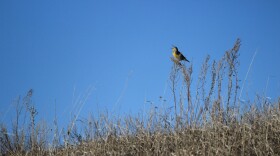I recently came across a page about clams, or freshwater mussels, from the North Dakota Game and Fish Department. It reminded me of a time, a few years ago, a cabin owner at Lake Metigoshe found a clam in the sediment near his cabin and asked me to identify it. This clam, “Sam the Clam,” was becoming a local celebrity. I could not identify it, but with the help of Dr. Andre DeLorme at Valley City State University it was tentatively identified as a giant floater (Pygandon grandis).
Fifteen species of what are generally referred to as "clams" have been documented in North Dakota waters. As with other organisms, freshwater mussels have both scientific names and common names. And their common names are quite colorful, with names like fat mucket, Wabash pigtoe, creek heelsplitter, deer toe, fragile papershell, and plain pocketbook.
Freshwater mussels are filter feeders, feeding on algae, bacteria, and some pollutants which accumulate in their bodies. As such, they help cleanse the water. They are generally considered indicators of healthy ecosystems and are sensitive to changes in their environment. They are also eaten by a variety of animals including raccoons and otters.
The sexuality of freshwater clams is variable, and things get really interesting when it comes to the larval stage of these animals. Fertilized eggs are retained until they develop into larvae. The larvae, or glochidia, are then released into the water and must attach to the gill filaments or body surface of a host fish. But not just any fish. Each species has a specific host or hosts.
After a few days or perhaps weeks the larvae become juvenile, release from the host, find a place in the substrate, and develop into adults. The known hosts for the giant floater, for example, include shiners and darters, creek chubs, and brook stickleback. The pink heelsplittter’s host is the freshwater drum. The threeridge’s host includes the shortnose gar and channel and flathead catfish.
Freshwater mussels are an important component of aquatic ecosystems. And rough fish can be important for mussels and other aspects of aquatic ecosystems even though they are often perceived as undesirable.
—
Further Reading
- A Two Phase Population Survey of Mussels in North Dakota Rivers (Dr. Andre DeLorme, Valley City State University)
- About Freshwater Mussels (Xerces Society for Invertebrate Conservation)
- Aquatic Mollusks of North Dakota (North Dakota Geological Survey)





